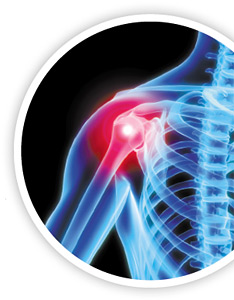A systematic review of the literature by J.W. Brantingham, DC, PhD, and colleagues (June JMPT) provides an evidence-based rationale for the appropriate use of manipulation, soft-tissue techniques, exercise and other therapy when treating shoulder complaints.
The review authors conducted a literature search using the Cumulative Index of Nursing Allied Health Literature, PubMed, MANTIS, the Physiotherapy Evidence Database and the Index to Chiropractic Literature, yielding 211 total citations dating from January 1983 to July 2010, of which 35 were deemed appropriate based on the authors' inclusion criteria: shoulder peripheral diagnosis treated with manual and manipulative therapy with or without multimodal or adjunctive therapy. Exclusion criteria included pain referred from spinal sites, but without a peripheral shoulder diagnosis; referral for surgical intervention (unless documented postsurgical healing occurred with or without rehab); the condition was not amenable to manipulative therapy (fracture, etc.); or there was a red-flag diagnosis (signs of infection, previous malignancy, bone deformity, etc.).
 Primary Findings
Primary Findings
- Rotator-cuff injuries, disorders and/or diseases (RCIDs): "This study found a level of B or fair evidence for MMT of the shoulder, shoulder girdle, and or FKC [full kinetic chain] combined with multimodal or exercise therapy for RCIDs. ... Generally, treatments that included manipulation combined with soft-tissue treatment and exercise therapy produced better outcomes than those that did not use multimodal methods. However, even if only manipulation was performed, usually there was a better outcome than no manipulation."
- Shoulder complaints, dysfunctions, disorders or pain (SCDDP): "There is a fair or B level of evidence for MMT of the shoulder / shoulder girdle and FKC combined with a multimodal treatment approach for SCDP. Evidence was assessed for MMT of the cervical and thoracic spines with and without upper rib manipulation, or shoulder / shoulder girdle and/or FKC MMT combined with exercise or multimodal therapy."
- FS (frozen shoulder) or adhesive capsulitis: "There is a fair (B) level of evidence for MMT with exercise, which included proprioceptive training ... Studies of FS included a variety of MMT, exercise, and/or rehabilitation treatments: HVLA manipulation, end-range mobilization (ERM), midrange mobilization (MRM), and mobilization with movement (MWM) of the shoulder only and/or shoulder girdle."
- Soft-tissue disorders: "There was a fair level of evidence (B) for MMT using soft-tissue or myofascial treatments for soft-tissue disorders of the shoulder." Treatment included soft-tissue massage, cryotherapy or heat application followed by passive stretching and ischemic compression.
- For neurogenic shoulder pain and shoulder OA, limited (C) and insufficient (I) evidence exists for cervical lateral glide mobilization and/or HVLA manipulation with soft-tissue release and exercise, respectively.
Dynamic Chiropractic editorial staff members research, investigate and write articles for the publication on an ongoing basis. To contact the Editorial Department or submit an article of your own for consideration, email
.




